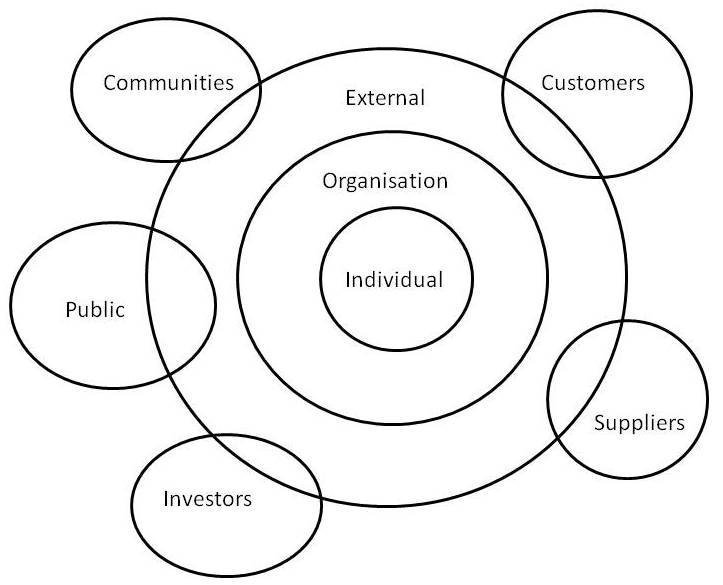Are you working in a social media savvy organisation? Which social networks do you use in your daily working lives?
With social media becoming omnipresent in everybody’s lives, it is timely for companies to consider how they can transform themselves into “social organisations”.
This transcends the next evolution of companies that already practice social media marketing. It also goes beyond mere company-customer relationship.
So how do we build a social organisation?
Three Spheres of Social Influence
A social organisation comprise multiple overlapping spheres of influence as illustrated below:
Let us go through each of the layers to understand how they work.
External Layer – Customer, Supplier and Distributor Engagement
At the external level, a social organisation would interact and engage with its multiple stakeholders through various social channels and platforms.
This can be as varied as public as online forums, blogs, Facebook pages, Twitter accounts, Google + accounts, and LinkedIn pages to more exclusive networks such as email lists, extranets and member log-in websites.
Content heavy companies may also have video channels, photo pages and audio podcasts, using them to share branded content with the rest of the world.
Naturally, social media marketing and content marketing would come into play here.
Organisational Layer – Employee and Inner Stakeholder Engagement
Moving deeper in, we have the organisational level of social businesses.
Here, the various platforms of a social intranet would come into play – employee profiles, blogs, wikis, discussion forums, chat, and so on.
Social organisations would probably nurture an open culture of sharing with the CEO making a regular appearance on the corporate networks. Ideally, staff members from geographically dispersed locations would form collaborative networks amongst themselves, leveraging on technology to triumph over geography.
Beyond your company’s immediate staff, long-term contractors such as franchisees, resellers, and licensees could also function in this layer.
Individual Layer – Equipping with Social Media Skills
Finally, at its most intimate core, we have the individual level.
While not every worker in a social organisation can become a hyper-connected advocate ala Robert Scoble (the world famous social media guru who cut his teeth as a content creator in Microsoft’s Channel 9), it is still necessary for them to embrace the tenets of “going social”.
To allay fears of being sued or sacked for “saying the wrong things” online, social organisations may wish to lay down guidelines on digital discourse.
More importantly, a culture of trust and encouragement needs to be forged to encourage employees to speak up as opposed to shut up.
At present, most employees – and their bosses – are likely to tread the grounds of social spaces with some trepidation. To nudge these organisations along, it may be useful to find “social champions” to help blaze the trail forward. These alpha users could set the stage for the rest to follow.
The Future? More Organisations “Going Social”
In the future, however, I believe that more organisations will embrace the “social way”.
Guided by a philosophy of trust, transparency and openness, they will make their walls more porous, allowing ideas, knowledge, data and relationships to flow freely both inside-out and outside-in.
Working in a fluid and seamless fashion, employees in such social organisations could leverage on social technology to improve communication, collaboration and innovation.
Hopefully, such a day will not take too long to arrive.
Is your organisation social too? What is your daily working experience like?

Bees are masters of building social organisations! (courtesy of ahow)


